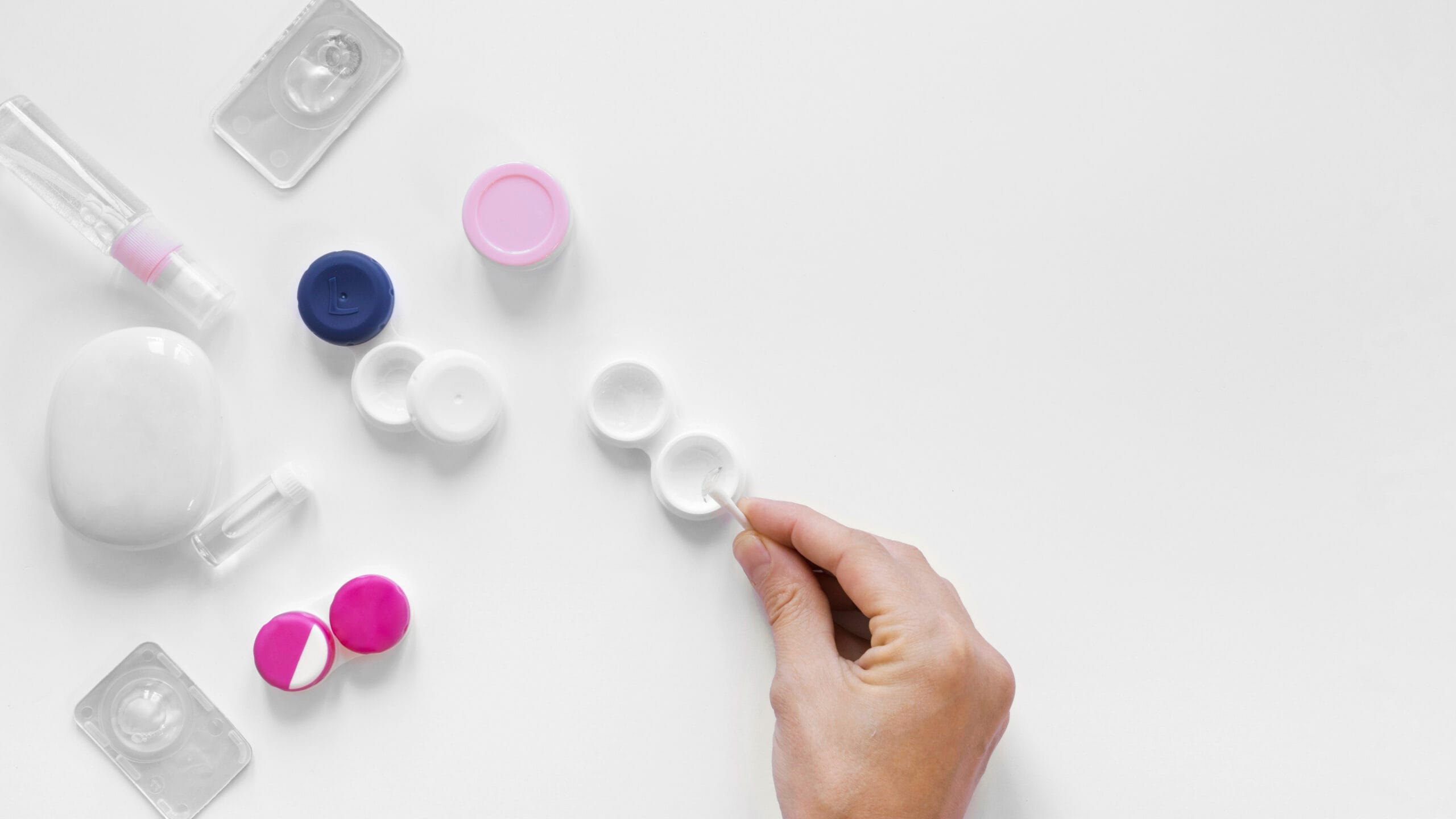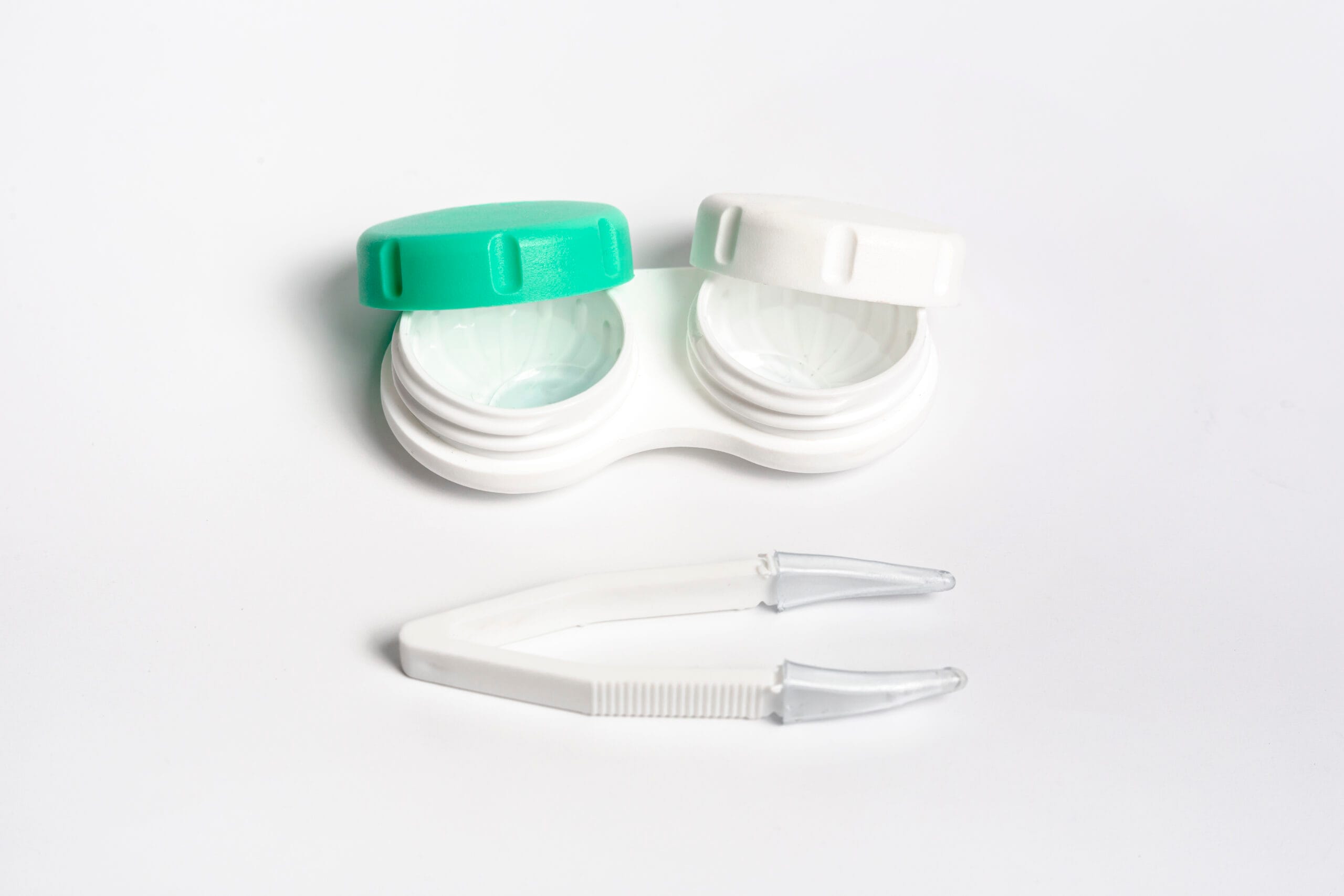Monthly Lens
Monthly Lens: Recognising the Signs Your Lenses Must Be Tossed
Monthly lens users have to be particularly concerned about the state of their eyes because overdue lenses can result in infection or agony. Redness, strange irritation, or a gritty feeling usually indicate that your lenses have come at the end of their safe use. Replacing them promptly guarantees clear eyesight and keeps eye health, thereby avoiding problems before they manifest.
Monthly Lens 1: Discomfort or Irritation
Persistent irritability or discomfort is among the most frequent and quick indicators your monthly contact lenses need replacing. Although some dryness or little pain can occasionally occur during a long day, persistent sensations such scratchiness, burning, or a foreign-body feeling point to accumulation of deposits, wear-down, or micro damage of the lens.
On the surface of monthly lenses, protein, lipid, and mineral deposition can lower their smoothness, thereby making them less comfortable and creating friction against the sensitive corneal surface. Likewise, microscopic tears or abrasions sometimes undetectable to the naked eye can snag on the eye and cause inflammation. Ignoring these warning signs can turn little irritation into more serious issues including corneal abrasions, infections, or inflammation, which call for medical treatment.
If captured by an aged lens, environmental elements like dust, pollen, and makeup might also worsen pain. Though cleaning and rewetting drops provide short relief from the irritation, constant irritation is a sure sign that the lens has passed its safe use duration and should be thrown. Monthly lenses are made with particular material integrity and surface smoothness in mind; overextension harms both comfort and safety.
Eye care specialists stress that listening to your eyes is essential: discomfort is an early warning that the lens might no longer be fit for wear, not only a little annoyance. Early lens replacement guarantees clear vision, good eye health, and avoidance of avoidable consequences from continuous lens usage.
Monthly Lens 2: Exceeding the Wear Period

One of the most obvious signs your monthly contact lenses need to be discarded is merely going over the advised wear duration. Made with great care, monthly lenses are meant to preserve structural integrity, moisture retention, and cleanliness for up to 30 days of use.
But past this point, even if the lenses seem to be faultless and feel great, they can contain undiscovered minute deposits, proteins, and bacteria. Because the lens material gradually loses its capacity to let oxygen adequately reach the cornea, using lenses beyond their intended lifetime raises the risk of eye irritation, dryness, and infection.
Long-term use on the sensitive corneal surface results in little scratches, hence leading lens distortion or reduced flexibility. Though not immediately obvious, the small changes in lens performance such as decreased moisture or a little loss in sharpness can gather over time to cause eye strain or pain. Monthly lenses try to strike a compromise between comfort, safety, and operation; therefore, eye care experts highly stress adherence to the replacement schedule.
Log the initial day of lens use or set a reminder to guarantee timely replacement and so prevent undesired overuse. Respecting wear time is actually a preventative measure to maintain best vision, safeguard eye health, and guarantee that the advantages of monthly lenses among others comfort and clarity are always preserved during their intended life span.
Monthly Lens 3: Tears or Damage
Among the most crucial indications that your monthly contacts must be thrown away is any evidence of rips or actual harm. Designed to lay gently on the eye’s surface, lenses are fragile; even a small cut, tear, or scratch can have significant effects.
Redness, discomfort, and in severe situations corneal scratches or infections can result from a damaged lens scratching the cornea. Although the lens is on the finger or in solution, these errors are not always immediately obvious; yet, when on the eye, they cause a faint irritation that progressively gets worse.
Unintentional contact with fingernails, cosmetics, or dust particles can induce micro-tears, hence weakening the structure of the lens and making it more prone to cracking when worn. Damage lenses also lose their intended form, which could distort their position on the eye and impact vision clarity. Replacing the lens is far safer than betting with eye damage even if it looks to be undamaged following a minor event.
Regular lens examination before insertion, careful manipulation, and proper solution storage help to reduce the tears‘ likelihood; yet, once a lens exhibits any sort of physical damage, throwing of it immediately is the safest approach. Prioritising lens integrity not only guarantees comfort and clear vision but also safeguards long-term eye health, hence emphasising why every monthly lens wearer must always check tears or damage.
Monthly Lens 4: Blurred or Fluctuating Vision

One of the most typical and important indications your monthly contact lenses need replacing is hazy or shifting vision. Unlike transient visual impairments caused by weariness or dry eyes, vision that always appears fuzzy, blurry, or unsteady while you have your contacts on often points to problems with the lens itself.
Protein, lipids, and mineral deposits naturally accumulate on the surface of monthly lenses over a month even with adequate cleaning. These deposits can disrupt the usual path of light across the lens, hence reducing sharpness and giving items distorted or blurry look. Additionally, little micro-tears or aberrations in the lens composition can affect the lens’s fitting on the eye, therefore leading to sliding, slipping, or inconsistent eyesight all day long.
Many lens wearers’ eyesight also varies depending on the number of hours the lenses have been in their eyes or on environmental factors like humidity, screen time, or fan and air conditioning airflow. Wearing damaged clarity lenses and ignoring these symptoms does not only worsen agony but also increase the risk of eye strain, dryness, and even infection.
If your vision is no longer crisp and constant, it follows that your monthly lenses have reached the conclusion of their safe life. Rapid replacement saves eye health, ensures consistent visual acuity, and helps to avoid long-term effects of prolonged usage of dated lenses.
Monthly Lens 5: Redness or Unusual Eye Sensations
One of the most apparent signs your monthly contact lenses require modification is consistent redness or odd ocular sensations. Though lens use can occasionally cause some small discomfort, never ignore ongoing irritation.
Generally indicating an excessive strain on the sensitive eye tissues caused by protein deposits, tear, or degradation over time in the lenses, redness Unusual feelings like itching, burning, a rough feeling, or excessive watering among other warning indications suggest the lens might not be safe any longer for usage.
These symptoms might be caused by the lens changing the natural tear film, collecting dust, or harbouring bacteria, thus causing infections or corneal scratches if ignored. Even if your eyes react normally and the lens seems wonderful, your response is a natural warning system pointing the lens has gone past its optimal lifetime.
Ignorance of these physiological cues could raise one’s likelihood of developing long-term eye conditions like chronic dryness, irritation, or more serious infections; monthly lenses are designed to have a fixed lifespan to guarantee safety. Treat any unexpected emotions or chronic redness as a clear indication to immediately eliminate and discard the lens.

We are a company of optometrists & opticians. We focus on providing our customers with their preferred optical products to improve visual acuity and enhance their quality of life. At PopularLens, you will find niche and exclusive brands.
 Free Shipping within SG With Order Over $80
Free Shipping within SG With Order Over $80 Lowest Price Guarantee
Lowest Price Guarantee

